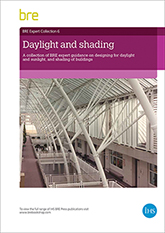Bre Digest 361 Do Buildings Crackers
вторник 25 декабря admin 17
Bre Digest 361 Do Buildings Crackers Rating: 4,8/5 1239 votes
Buildings and other built structures are moving all the time, but usually these movements are so small as to be unnoticeable. Movement can be caused by defects, movement of the ground, foundation failure, decay of the building fabric, and so on.
Examines the causes of cracking in buildings and shows, with descriptions and illustrations, the visible results of a wide range of problems. The Digest is a key to other, more specialised, BRE Digests and other publications and does not contain a complete solution to every cracking problem. It aims to broaden the understanding of the factors responsible and increase the likelihood of correct diagnosis and repair. Avoidance of some of the pitfalls will minimise future trouble in new buildings and lead to better design and workmanship.

BRE BRE is a building science centre that generates new knowledge through research. This is used to create products, tools and standards that drive positive change across the built environment. BRE helps its government and private sector clients meet the significant environmental, social and economic challenges they face in delivering homes, buildings and communities. BRE is owned by the BRE Trust, a registered charity. The Trust uses the profits made by the BRE companies to fund research and education that advances knowledge of the built environment. IHS BRE Press The Capitol Building Bracknell RG12 8FZ UK.
The Amber document status indicator indicates that some caution is needed when using this document - it is either: • (a) current in the Construction Information Service but has a document or documents that replace or amend it, so please look at the 'Newer Versions' tab or • (b) not in the Construction Information Service but with another reason why it may be relevant to our customers such as being cited in NBS or in the Building Regulations Approved Documents. Again there may be more recent versions of the document.
This document is available as part of the Construction Information Service. The Construction Information Service brings together a comprehensive collection of essential technical documents from a wide range of publishers in one online package.
Covering all aspects of building, engineering, design and construction, it provides its users with a single source for all their technical information needs. Contact us today to find out how to become a subscriber to this indispensable service. Why do buildings crack? (2014 revision) Digest 361. Document Status Current Supplement Core Supplement Series Digest Abstract Examines the causes of cracking in buildings and shows, with descriptions and illustrations, the visible results of a wide range of problems. Does not contain a complete solution to every cracking problem, but aims to broaden the understanding of the factors responsible and increase the likelihood of correct diagnosis and repair.
Author Sadgrove, R. History Revised edition of the Digest 361 (1991). ISBN 884 Subjects • Special subject areas • Building failures Publisher History BRE is a building science centre that generates new knowledge through research. This is used to create products, tools and standards that drive positive change across the built environment. BRE helps its government and private sector clients meet the significant environmental, social and economic challenges they face in delivering homes, buildings and communities.
BRE is owned by the BRE Trust, a registered charity. The Trust uses the profits made by the BRE companies to fund research and education that advances knowledge of the built environment. Information NBS NBS has produced specification systems and information products for construction industry professionals for more than 40 years.
The National Building Specification is the recognised UK national standard and is used by over 5,000 organisations. NBS is part of RIBA Enterprises Ltd. IHS Markit IHS Markit is a leading global source of critical information and insight for customers in a broad range of industries. Our customer product and service solutions span four major areas of information: energy, product lifecycle management, environmental and security.
By focusing on our customers first, we deliver data and expertise that enable innovative and successful decision-making. Customers range from governments and multinational companies to smaller companies and technical professionals in more than 180 countries. IHS has been in business since 1959 and employs more than 3,500 people in 35 locations around the world. Revolun nmina taxus learning download for windows 7.